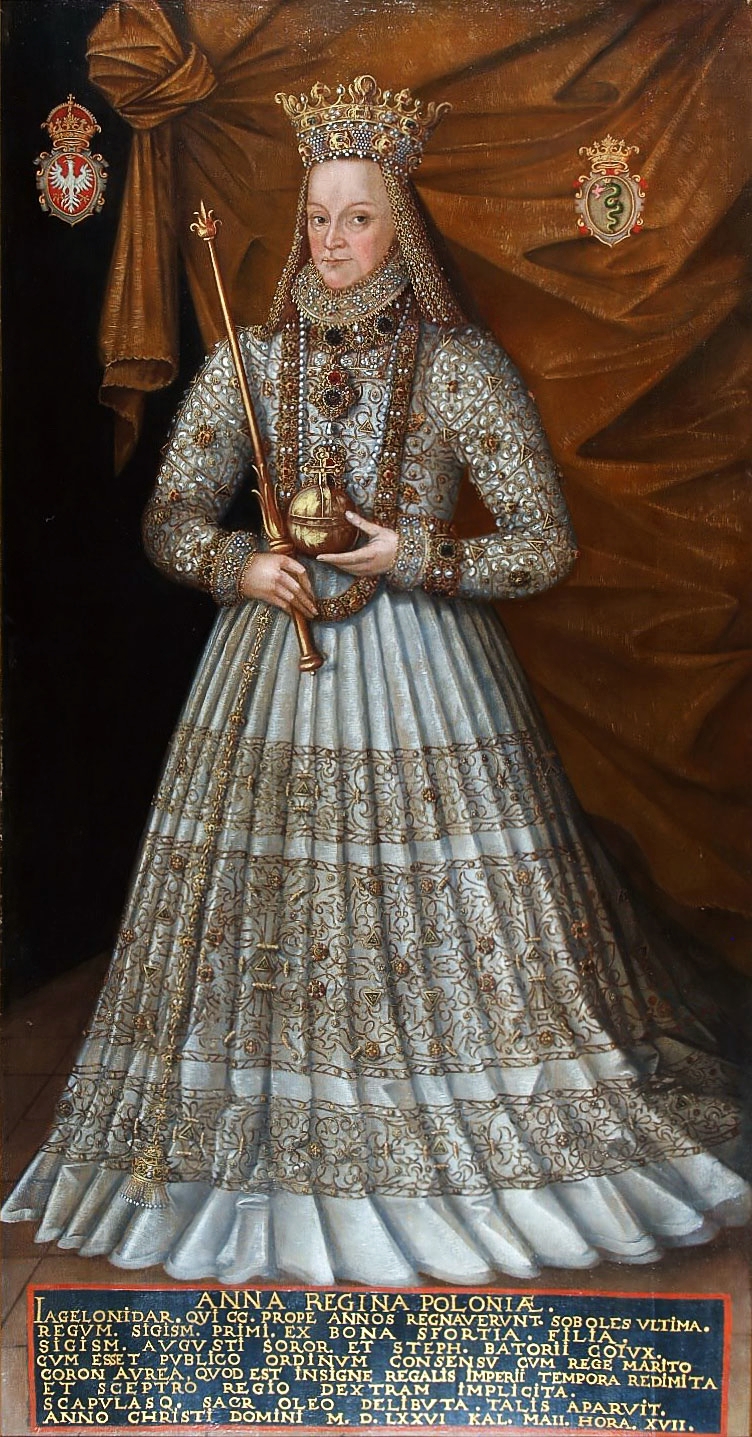Anna Jagiellonka became the second (and last) woman in Poland to become king on 15 December 1575. How did this happen?
Anna was the daughter of King Sigismund the Old of Poland and Queen Bona Sforza. After her father’s death in 1548, her brother Sigismund August succeeded to the Polish throne.
Unfortunately, Anna had no luck with marriage. In 1562, King Sigismund Augustus planned to marry her off to the Duke of Finland and future Swedish king, Johann Vasa. However, he preferred her younger sister, Catherine.
In 1565, the chance to marry Prince Magnus of Denmark arose, but Sigismund Augustus rejected the proposal due to excessive dowry demands. Anna therefore remained unmarried.
The situation changed after the death of King Sigismund Augustus in 1572. The Polish-Lithuanian Commonwealth faced the dilemma of succession to the throne, and Anna Jagiellonka became one of the most important figures in the country. The first free election in 1575 selected Henry of Valois as king of Poland, who promised to marry Anna. However, after he fled Poland and attempted to take the throne of France, the nobility began to consider other options – including the crowning her as king of Poland. Anna was showing remarkable political sense at the time.
On 15 December 1575, Anna Jagiellonka was proclaimed King of Poland in Krakow, and then Stefan Batory, Duke of Transylvania, was chosen to marry her and be crowned King. The wedding took place on 1 May 1576 at Krakow’s Wawel Castle. Their conjugal life proved difficult and unhappy. Anna tried to gain influence over the country’s politics, but met with resistance from her husband, who did not accept her political ambitions, even though she was formally king and could have had an equal say in power.
After the death of Stefan Batory in 1586, Anna had theoretically the right to take over power in Poland. However, she was already tired and ill, so she decided to support her nephew, Sigismund Vasa, as the new king of Poland.
Anna Jagiellonka died on 9 September 1596 in Warsaw.





